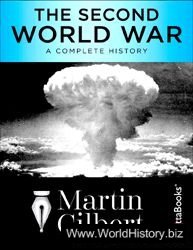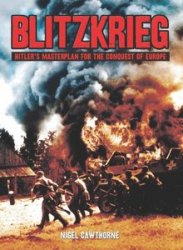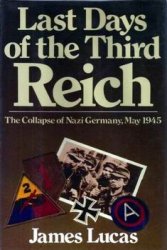The election encouraged Roosevelt to act more boldly. When Prime Minister Churchill informed him that the cash-and-carry system would no longer suffice because Great Britain was rapidly exhausting its financial resources, he decided at once to provide the British with whatever they needed. Instead of proposing to lend them money, a step certain to rouse memories of the vexatious war debt controversies, he devised the lend-lease program, one of his most ingenious and imaginative creations.
First he delivered a “fireside chat” that stressed the evil intentions of the Nazis and the dangers that a German victory would create for America. Aiding Britain should be looked at simply as a form of selfdefense. “As planes and ships and guns and shells are produced,” he said, American defense experts would decide “how much shall be sent abroad and how much shall remain at home.” When the radio talk provoked a favorable public response, Roosevelt went to Congress in January 1941 with a plan calling for the expenditure of $7 billion for war materials that the president could sell, lend, lease, exchange, or transfer to any country whose defense he deemed vital to that of the United States. After two months of debate, Congress gave him what he had asked for.
Although the wording of the Lend-Lease Act obscured its immediate purpose, the saving of Great Britain, the president was frank in explaining his plan. He did not minimize the dangers involved, yet his mastery of practical politics was never more in evidence. To counter Irish American prejudices against the English, he pointed out that the Irish Republic would surely fall under Nazi domination if Hitler won the war. He coupled his demand for heavy military expenditures with his enunciation of the idealistic “Four Freedoms”—freedom of speech, freedom of religion, freedom from want, and freedom from fear—for which, he said, the war was being fought.
After the enactment of lend-lease, aid short of war was no longer seriously debated. The American navy began to patrol the North Atlantic, shadowing German submarines and radioing their locations to British warships and planes. In April 1941 U. S. forces occupied Greenland; in May the president declared a state of unlimited national emergency. After Hitler invaded the Soviet Union in June, Roosevelt moved slowly, for anti-Soviet feeling in the United States was intense.30 But it was obviously to the nation’s advantage to help any country that was resisting Hitler’s armies. In November, $1 billion in lend-lease aid was put at the disposal of the Soviet Union.
Meanwhile, Iceland was occupied in July 1941, and the draft law was extended in August—by the margin ofa single vote in the House ofRepresentatives. In September the German submarine U-652 fired a torpedo at the destroyer Greer in the North Atlantic. The Greer, which had provoked the attack by tracking U-652 and flashing its position to a British plane, avoided the torpedo and dropped nineteen depth charges in an effort to sink the submarine.
Roosevelt (nothing he ever did provided more ammunition for his critics) announced that the Greer had been innocently “carrying mail to Iceland.” He called the U-boats “the rattlesnakes of the Atlantic” and ordered the navy to “shoot on sight” any German craft in the waters south and west of Iceland and to convoy merchant vessels as far as that island. After the sinking of the destroyer Reuben James on October 30, Congress voted to allow the arming ofAmerican merchant ships and to permit them to carry cargoes to Allied ports. For all practical purposes, though not yet officially, the United States had gone to war.
Russell Crowe and Renee Zellweger embrace in Cinderella Man.
As Cinderella Man (2005) opens, boxer James J. Braddock (Russell Crowe) lands a right-hook that sends his opponent sprawling to the canvas—a knockout. Braddock raises his hands in triumph. The crowd roars and a jazz band blares. After the match, Braddock's agent peels off a wad of bills— $8,000—Braddock's winnings. This is just the beginning, the agent tells Braddock, because he has a shot at the heavyweight title.
When Braddock arrives at his home in New Jersey, his wife, Mae (Renee Zellweger) leaps into his arms."I'm so proud of you,"she says. Three children race out of the house and mob their father. Later, as Braddock prepares for bed, he sets his gold watch and thick wallet onto a polished wood dresser. The year is 1928.
Abruptly, the scene dissolves. A cheap, unfinished dresser comes into focus. The watch and wallet are gone. Braddock, unshaven, looks wearily around a squalid hovel. The children, on mattresses in shadows, cough and wheeze. The year is 1933.
Braddock, like much of the nation, has fallen on hard times, his savings wiped out by the Depression. Worse, he has broken his powerful right hand and, desperate for money, resumed boxing before it healed.
During a bout in Mount Vernon, Braddock again breaks his hand but tries to finish the match so he can earn his $50 fee. The fans jeer and the boxing commission revokes his license. He tries to work at the dockyards but often there is no work to be had. The grocer refuses credit. The milkman stops deliveries. The power company shuts off the gas and electricity. His children, underfed and chilled, become sick. Braddock returns to Madison Square Garden, hat in hand, and begs for money. He also applies and receives federal assistance—welfare—at $6.40 a week. Compared to Braddock, Cinderella had it easy.
Then Braddock's agent, an unlikely fairy godmother, shows up with an extraordinary proposition. A huge, young bruiser and leading contender for the heavyweight title— "Corn"Griffin—had been scheduled to fight the next evening at Madison Square Garden. But Griffin's opponent has backed out at the last minute. Rather than cancel the fight, Madison Square Garden has offered Braddock $250 to serve as Griffin's punching bag. Desperate, Braddock accepts.
What happens the next day—June 14,1934—is the stuff of fairy tales. Braddock borrows boxing boots and heads to Madison Square Garden. He can't afford dinner; his agent, aghast, fetches a bowl of hash minutes before the fight.
When Braddock enters the ring, his robe bears another boxer's name.
After the opening bell, Griffin, a thick-necked bull of a man, charges Braddock and pounds him mercilessly. Braddock, sustained only by raw courage—and a tough chin, survives the first two rounds. Then, in the third, he surprises Griffin with a thunderous hook, knocking the giant out cold.
Because Griffin was the top contender, Braddock himself is placed on the list of contenders. He proceeds to score one upset after another until he's next in line to face Max Baer (Craig Bierko),the heavyweight champion whose fearsome right has killed two boxers. The manager of Madison Square Garden requires Braddock to sign a waiver absolving it of responsibility should Braddock also perish at Baer's hands. At a restaurant, Baer runs into Mae and warns her against letting her husband into the ring, adding that she's too pretty to become a widow. "Maybe I'd comfort you after he's gone," he says with a leer.
On June 13,1935,the night of the fight, as Mae goes to church to pray, reporters speculate on whether Braddock can last a single round against the champ. The betting odds against Braddock are the worst in memory. But a movie named after a fairy tale must have a happy ending, and Cinderella Man comes through. After fifteen harrowing rounds, Braddock wins a unanimous decision. In 364 days, he has gone from impoverished "bum" to heavyweight champion of the world.
"This is a true story,"declared director Ron Howard. Yet fairy tales, by definition, are make-believe; and Hollywood, by reputation, believes in nothing as fervently as the dollar. Thus viewers are entitled to ask: Does Cinderella Man tell the actual story of James J. Braddock?
The surprising answer, given the implausibility of the plot, is yes, up to a point. And that point begins with the Baer-Braddock fight: Madison Square Garden did not warn Braddock of the danger of fighting Baer or oblige him to sign a waiver.
Also, the fight was no slugfest. The New York Times dubbed it "one of the worst heavyweight championship contests”in boxing history. Reporters assumed that Baer failed to take the early rounds seriously, lost others on foolish fouls, and realized too late that he was behind. Baer, too, was no unfeeling monster. He never teased Mae Braddock or gloated over killing two fighters in the ring. He even raised money for the first boxer's widow. Most interesting is the movie's error of omission, or, more precisely, of suppression. It makes no mention of the fact that Baer proudly trumpeted his Jewish ancestry. Baer had a large Star of David stitched onto his trunks, an image that appears in the movie once, briefly and from a distance.
Why did director Howard evade the truth about Baer? The likely answer is that Howard knew that fairy tales require villains as well as heroes. Cinderella Man's Braddock looms larger for slaying the Big Bad Baer.
In fact, the real enemy was the Great Depression. Braddock understood this. When asked how he managed to turn his career around, he explained,"! was fighting for milk.” Damon Runyon, the writer who first called Braddock "Cinderella Man,”recognized that the boxer's story took on mythic proportions because it encapsulated the aspirations of an entire nation.
But the movie misses the point that many ethnic groups had their own boxing champions. After Braddock had upset Griffin, he fought Joe Louis, the Brown Bomber. While the movie rightly shows Irish Americans praying for Braddock, it neglects the millions of African Americans who also gathered around radios, praying for Louis. Jewish fans, similarly, identified with Baer, cherishing his 1933 defeat of the German boxer, Max Schmeling, Hitler's favorite. When Braddock defeated Baer, many Jews were devastated.
In 1936, the Chicago Defender, an African American newspaper, wrote that history would be kind to Braddock. "Years from today you will read that Jim Braddock was the one champion who would not and did not draw the color line,” it noted. But it concluded that Braddock did so for mercenary reasons: "The facts are that Braddock needs money and he more than anyone else knows that only with Joe Louis in one corner can he draw a purse benefiting a champion's appearance." Three years later, when Louis defeated Braddock to win the heavyweight title, the fight at Chicago's Comiskey Park attracted the largest mixed crowd of blacks and whites in boxing history.
Madison Square Garden, keenly aware of the ethnic appeal of boxing, worked hard to ensure that nearly every major immigrant group had someone to cheer for on fight night. Boxing promoters were among the first to learn that in sports, as in entertainment more generally, segregation did not pay.
Cinderella Man depicts, with considerable accuracy, a simple and good man's triumph over adversity. His story was, indeed, the stuff of myth. But in its earnest attempt to universalize Braddock's appeal, the movie obscures the ethnic divisions that characterized so much of American life during the first half of the twentieth century.




 World History
World History









